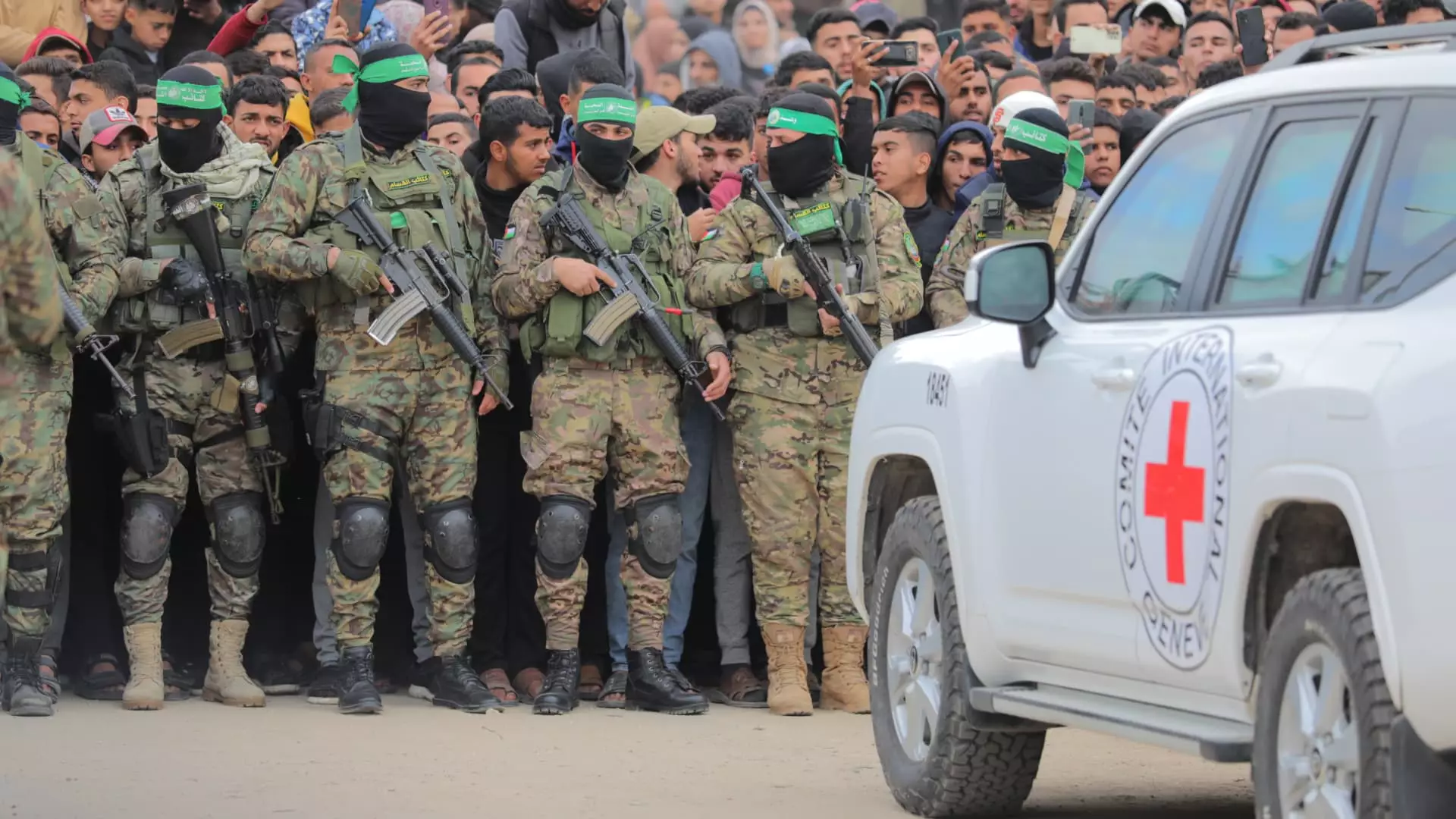On a recent Saturday, a significant yet unsettling event occurred as three Israeli hostages were released by Hamas amid ongoing negotiations surrounding a ceasefire in the region. The appearance of these men, particularly their frail and emaciated states, deeply impacted the Israeli public and provided a striking visual of the human cost intertwined in the hostilities. Ohad Ben Ami, Eli Sharabi, and Or Levy, captured during an attack by Hamas on October 7, 2023, were handed over in a televised event that highlighted the severity of their physical deterioration, amplifying the emotional turmoil for their families and the broader community.
Families of hostages have experienced an emotional seesaw, oscillating between anxiety and anticipation. The conditions and appearance of the released individuals have ignited widespread grief and empathy, with the mother-in-law of Ben Ami, Michal Cohen, expressing her horror upon seeing the “skeleton-like” condition of her loved one. This poignant moment serves as a reminder of the brutal realities of war, seen through the lens of those who suffer the most.
In exchange for these three hostages, Israel agreed to release 183 Palestinian prisoners. This marked the latest episode in a series of exchanges that resulted in the release of numerous hostages and detainees. The current ceasefire deal, lasting 42 days, has held, thanks in part to U.S. mediation and the involvement of regional players such as Egypt and Qatar. However, doubts linger about the permanence of this agreement, especially with external political dynamics and rhetoric—most notably from U.S. President Donald Trump—raising questions about the future of Palestinians in Gaza. Questions of ethnic cleansing arose when Trump suggested that Palestinians be relocated to develop Gaza into an attractive destination akin to the “Riviera of the Middle East.”
Although the concept lacks support from Arab nations and Palestinian authorities, it does stir conversations about the geopolitical ramifications of the conflict. Israeli Prime Minister Benjamin Netanyahu’s welcoming stance towards Trump’s proposal only adds layers of complexity to an already intricate situation.
The Emotional Toll on Families
The release of these hostages symbolizes a brief respite amid a conflict that has resulted in widespread devastation on both sides. For the families of the released individuals, every step toward resolution is shadowed by the painful acknowledgment of loss. Eli Sharabi’s family illustrates this juxtaposition; while welcoming his return, they face the irreversible agony of having lost his two teenage daughters and wife during the Hamas assault. Such stories are not isolated, as the human toll is a common thread in narratives surrounding this ongoing crisis.
The emotional ramifications extend beyond immediate family. The broader Israeli community is left grappling with the impact of trauma—every act of violence reverberates through society, leaving enduring scars. The stark reality of familial loss and the trauma of captivity weigh heavily on the collective psyche of those whose lives are irrevocably changed by this conflict.
The continued violence and the responses it elicits are critical as we consider future peace prospects. Hamas’s initial assault on October 7, resulting in around 1,200 Israeli casualties and more than 250 hostages taken, has irrevocably altered the landscape. In retaliation, Israel has conducted extensive military operations in Gaza, yielding devastating consequences including the reported deaths of over 47,000 Palestinians, highlighting the severe humanitarian crisis.
As negotiations progress towards a second phase, targeted at returning remaining hostages and addressing military withdrawal from Gaza, it is essential to reflect on the complex human ramifications of these processes. The path to peace remains fraught with difficulties, but these hostage exchanges serve as vital steps, symbolizing both hope and desperation. Each life returned adds a chapter to a larger narrative of conflict—a reminder that, ultimately, the goal must be a sustainable peace wherein both sides can coexist without the looming threats of violence and loss.
Navigating this challenging terrain necessitates not only political negotiation but an understanding of the deep-seated grievances and traumas on all sides. As voices of both Israeli and Palestinian families rise in unity where there was once a division, it is crucial that these stories shape the strategies for resolution in a conflict that has persisted far too long.


Leave a Reply